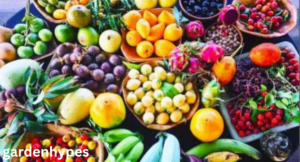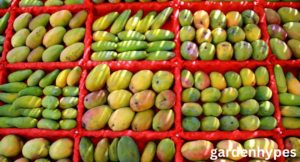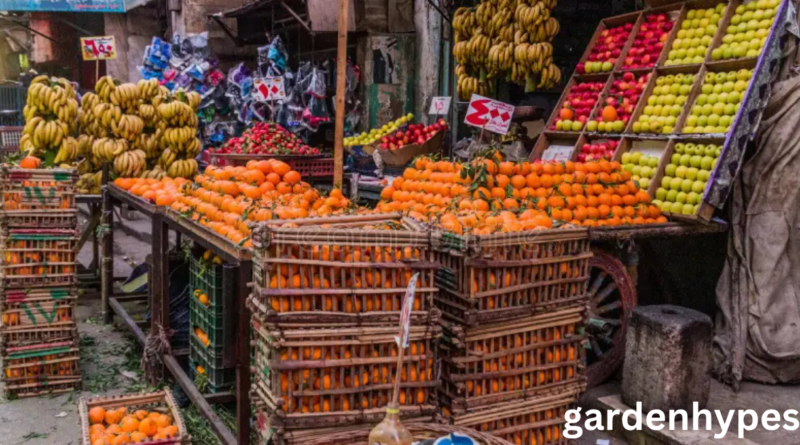Egyptian Fruit A Tasty Tour Through Egypt’s Natural Bounty
Introduction to Egypt’s Rich Agricultural Heritage
Egyptian Fruit isn’t just famous for the pyramids and the pharaohs—it’s also a land where fruit cultivation thrives thanks to its unique climate and fertile lands. From the bustling streets of Cairo to the peaceful banks of the Nile, fruits are everywhere—fresh, juicy, and deeply rooted in the nation’s culture. Whether you’re biting into a succulent date or sipping freshly squeezed pomegranate juice, you’re tasting a piece of Egyptian history.
click in link almond shortage
Why Egypt is Ideal for Fruit Cultivation
Egypt’s geography offers an incredible advantage for growing a wide range of fruits. The country enjoys abundant sunshine year-round—averaging over 3,000 hours annually. This, combined with rich alluvial soil from the Nile and sophisticated irrigation systems, creates optimal conditions for agriculture.
Additionally, Egypt has two main growing seasons: a winter season and a summer season. This dual-season structure means that farmers can plant and harvest crops multiple times throughout the year. It’s not uncommon to see oranges and guavas growing side by side or to find fresh figs and mangoes filling local markets in the same month.
This climatic diversity allows Egypt to grow both Mediterranean and tropical fruits. And with increasing advancements in agricultural technology, the variety and quality of fruit produced have only improved over the decades.
Ancient Traditions and Modern Farming
Fruit farming in Egypt dates back thousands of years. In fact, depictions of fruit like grapes, dates, and figs can be found on ancient temple walls and tombs. These fruits were not just for eating—they held religious and medicinal significance too. Dates were often included in offerings to gods, and pomegranates were believed to symbolize prosperity and fertility.
Fast-forward to the 21st century, Egypt has become one of the leading fruit exporters in Africa and the Middle East. While the methods have modernized, many of the traditional practices are still respected—especially in rural areas where family-owned farms continue to grow fruits using ancestral techniques.
The Role of the Nile in Egyptian Fruit Production
Nile Irrigation and Soil Fertility
Let’s face it—without the Nile, Egypt as we know it wouldn’t exist. This legendary river is the lifeline of the country, particularly when it comes to agriculture. Its seasonal floods once deposited nutrient-rich silt along its banks, turning the desert into lush farmland. Although modern dams have altered the natural flooding cycle, irrigation canals still carry water from the Nile to fields across the country.
This access to fresh water allows fruit trees to thrive even in arid regions. Farmers use drip irrigation, sprinkler systems, and other efficient methods to ensure that every drop is maximized. This not only sustains fruit production but also helps preserve precious water resources.
Thanks to the Nile, Egypt can grow fruits in regions that would otherwise be barren. You’ll find citrus groves in the Nile Delta, date palms in Upper Egypt, and mango orchards near the Red Sea coast—all thriving because of the river’s support.
Seasonal Abundance and Fruit Variety
One of the greatest perks of Egypt’s agricultural setup is the year-round availability of fresh fruit. In spring, markets overflow with strawberries, loquats, and apricots. Summer brings mangoes, melons, and guavas. Autumn and winter are dominated by citrus fruits, dates, and pomegranates.
This seasonal variety ensures that Egyptians always have access to locally grown, fresh produce. And since the supply is constant, the prices are often more affordable compared to imported fruit in other countries.
Additionally, the government actively supports fruit cultivation as a means of food security and export income. Special agricultural zones, subsidies, and training programs help farmers stay productive throughout the year.
click in link almond shortage

Popular Native Egyptian Fruits
Dates – The King of Egyptian Fruits
Let’s start with the undeniable king—dates. Egypt is the world’s top producer of dates, contributing over 1.6 million tons annually. The climate is perfect for growing date palms, especially in the southern regions like Aswan and the Siwa Oasis.
Dates in Egypt come in various types and textures—soft, semi-dry, or dry. Common varieties include Siwi, Zaghloul, and Saidi, each with its unique flavor and use. While some are eaten fresh, others are dried and stored for use in desserts, stews, and even drinks.
Beyond taste, dates are deeply woven into Egyptian culture. During Ramadan, they are the first thing many people eat to break their fast, following the tradition of the Prophet Muhammad. They’re also considered a source of energy, fiber, and essential nutrients like potassium and magnesium.
Farmers harvest dates in late summer and early autumn, using age-old methods passed down through generations. The process includes climbing palm trees, hand-picking the fruit, and sun-drying them in open-air racks. It’s labor-intensive but well worth the effort.
Figs – A Sacred and Sweet Tradition
Another native delight, figs have been grown in Egypt for millennia. In fact, they were considered sacred by the ancient Egyptians. Figs were buried with mummies as offerings for the afterlife and were even depicted in temple art.
Egyptian figs are juicy, sweet, and come in green and purple varieties. They’re typically harvested between June and August and are a staple in both rural and urban diets. You’ll often see roadside vendors selling fresh figs by the kilo, or dried ones packed in bundles at local markets.
Figs are not just tasty—they’re packed with fiber, antioxidants, and essential minerals. They’re used in traditional remedies for digestive issues and are often incorporated into sweet dishes like fig jam, fig-stuffed pastries, and fig molasses.
Despite their ancient origins, figs remain relevant in modern Egyptian kitchens. They symbolize the country’s ability to blend tradition with contemporary taste.
click in link almond shortage

FAQs
- What fruit is Egypt most famous for?
Egypt is most famous for its dates, especially due to being the world’s largest producer. The Siwi and Zaghloul varieties are highly popular, and dates are deeply rooted in Egyptian culture and cuisine, especially during Ramadan. - Are Egyptian fruits organic?
While not all fruits in Egypt are certified organic, a growing number of farms are adopting organic and sustainable practices. You can find organic produce at specialized markets, health food stores, and eco-friendly farms throughout the country. - Can tourists take fruits back home from Egypt?
It depends on your home country’s agricultural import regulations. Many countries restrict fresh fruit imports to avoid pests and diseases. However, dried fruits like dates, figs, and packaged pomegranates often make great souvenirs and are usually allowed. - What are the healthiest fruits in Egypt?
Some of the healthiest Egyptian fruits include pomegranates (rich in antioxidants), guavas (high in Vitamin C), figs (high in fiber), and dates (energy-dense with essential minerals). These fruits not only taste good but also offer various health benefits. - Where can I find the best fruit markets in Cairo?
Some top spots in Cairo include Attaba Market, Zamalek’s Farmers’ Market, and local souks in Maadi and Heliopolis. These places offer a wide variety of fresh, seasonal fruits at affordable prices, with the added bonus of authentic local vibes.
